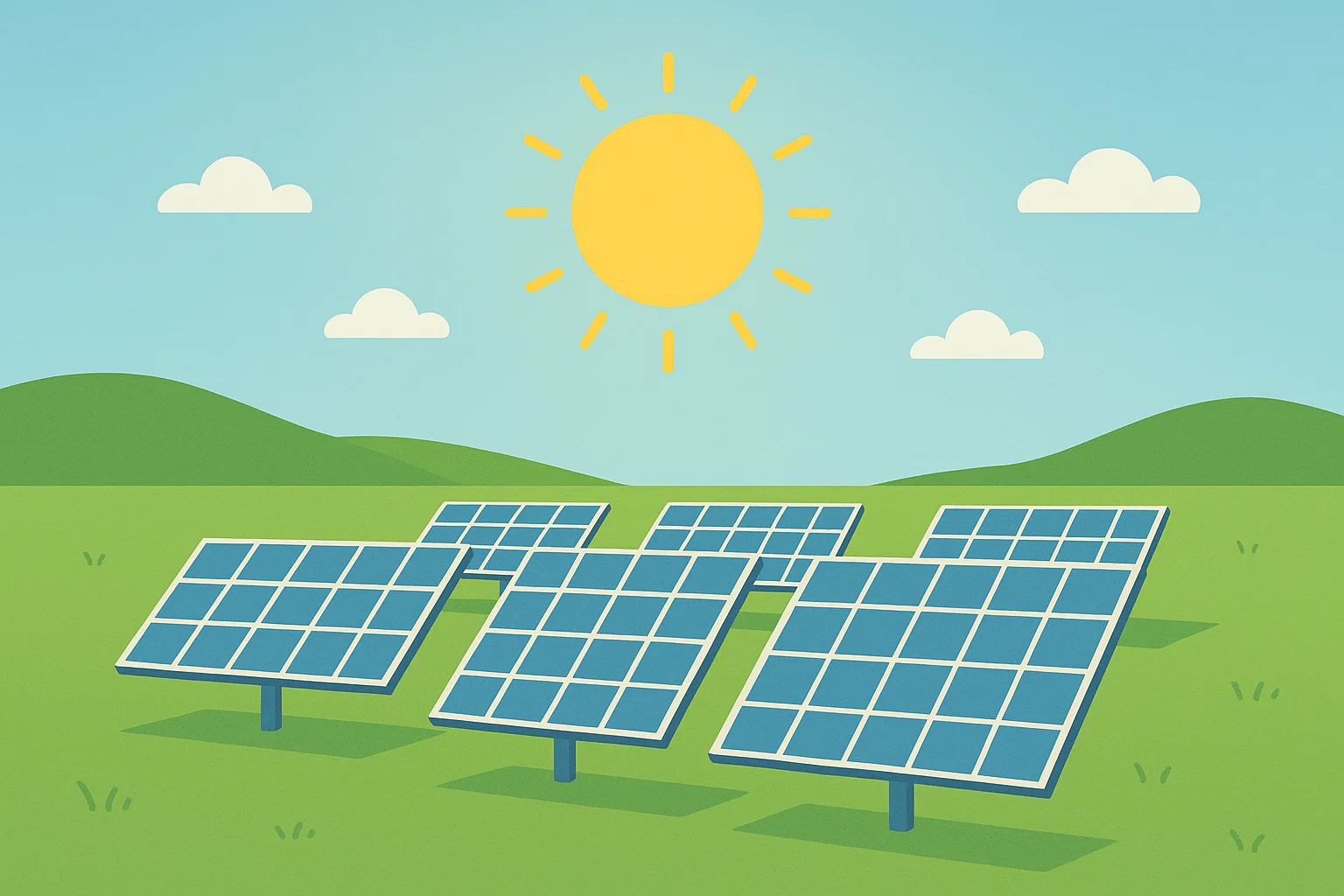Ground Mount Solar: Definition, Benefits, Costs & System Types
Ground mount solar systems place PV modules on engineered frames anchored to the ground—unlocking optimal tilt, bigger arrays, and flexible siting when roofs aren’t ideal. Below is a concise, marketing-ready guide to help you evaluate fit, cost drivers, and the best system for your site.
What Is Ground Mount Solar?
Ground mount solar refers to PV arrays installed on the ground—rather than on a roof—using steel or aluminum frames anchored by driven piles, screw anchors, or concrete footings. Freed from roof constraints, you can optimize tilt/azimuth, row spacing, and table size for the best year-round yield.
- Install on open land, yards, farms, brownfields, or car-adjacent clearings.
- Frames elevate modules inches to feet above grade for airflow and service access.
- Supports small residential arrays to multi-megawatt, utility-scale systems.
Who Should Consider It?
- Homes or sites with shaded, small, or aging roofs.
- Farms, commercial lots, and facilities seeking larger capacity and easy maintenance.
- Projects prioritizing best-possible panel orientation and expandability.
Key Benefits
Optimized Performance
Dial in tilt and azimuth for your latitude and tariff profile, improving annual production compared with sub-optimal roof orientations.
Scalable Capacity
Build larger tables with ideal row spacing—expand later without roof limitations.
Serviceability
Ground-level access simplifies cleaning, inspections, and future upgrades.
Tip: If you plan to add EV charging or electrify HVAC, ground mounts make scaling PV capacity straightforward.
Potential Drawbacks & Cost Drivers
Considerations
- Requires open land and adherence to setbacks, drainage, and vegetation control.
- Higher site work vs. rooftops (foundations, trenching, fencing as needed).
What Influences Cost?
- Soil & foundation (driven piles vs. concrete vs. screw anchors).
- Design wind/snow loads, topography, access, and interconnection distance.
- Hardware & BOS (racking, wiring, combiner placement, fencing).
Note: Racking hardware often represents ~10% of total system cost; site work and BOS can vary significantly by project.
Types of Ground Mount Systems
Fixed-Tilt Ground Mount
Panels set at a fixed angle (often near site latitude) on steel/aluminum frames. Simple, robust, and low-maintenance—ideal for many climates.
Pole-Mount / Single-Pole
Modules on a central pole with a small table. Good for small sites or uneven terrain; limited scalability compared to multi-post tables.
Single-Axis Trackers
Motorized rows that follow the sun east-to-west, increasing annual yield with added complexity and O&M needs.
Foundation Options
Driven piles for uniform soils; concrete footings or screw anchors for rocky, landfill, or high-corrosion sites. A geotech report guides selection.
Ground Mount vs. Rooftop Solar
| Criterion | Ground Mount | Rooftop |
|---|---|---|
| Energy Optimization | Free to choose best tilt/azimuth and spacing. | Constrained by roof pitch, orientation, and obstructions. |
| Array Size | Scales with land; easy to expand. | Limited by roof area and structural capacity. |
| Installation | Site work and foundations required. | Less civil work; roof penetrations or ballasting. |
| Maintenance | Ground-level access; simpler service. | Roof access and safety measures required. |
| Best Fit | Yards, farms, commercial land, utility-scale. | Space-constrained urban homes and buildings. |
Costs & Budgeting
Primary Cost Components
- Racking & foundations (material + installation)
- Modules, inverters, wiring (BOS)
- Trenching, interconnection, and permitting
How to Control Costs
- Obtain a geotechnical report early to avoid over-engineering foundations.
- Minimize DC/AC cable runs with smart layout and equipment placement.
- Use pre-engineered, UL-listed racking to speed permitting and inspection.
Installation Process (At a Glance)
1) Site & Design
Survey, shading analysis, soil testing, structural design, and layout with setbacks and access lanes.
2) Foundations
Driven piles or footings installed per spec; quality checked for plumb, depth, and pull-out.
3) Racking & Modules
Posts, beams, rails, then module mounting, wiring, and equipment commissioning.
FAQ
Is ground mount solar more expensive than rooftop?
Often yes, due to site work and foundations. However, optimized orientation and larger arrays can improve lifetime economics.
How much land do I need?
Rule of thumb: plan several hundred square feet per kW DC including row spacing and access. Actual needs vary by module type and layout.
Do I need trackers?
Not necessarily. Fixed-tilt is simpler and rugged; trackers add yield but increase complexity and O&M. Fit depends on site and goals.
Get a Ground Mount Spec & Quote
Share your site latitude, soil notes, design loads, module size, and target kW. We’ll map a layout and bill of materials.
Note: Product names and figures are examples. Always confirm final engineering, local codes, and warranties with manufacturers and authorities having jurisdiction.

